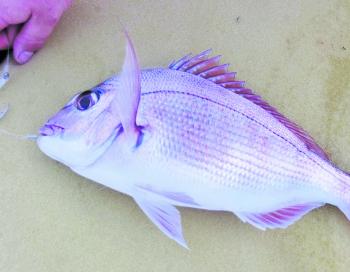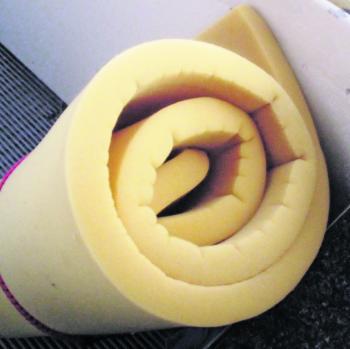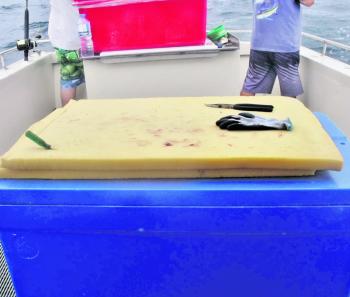With an emphasis on some of the basic ‘do not’s’ of fish handling, part one of this series also highlighted the importance of correct fish handling as a way to guarantee the most superior quality of catch consumed at our dinner tables. Overall though, correct fish handling technique was recognised by experts as a major contributor to responsibly sustaining the longevity of fishing as a whole – especially by returning under or oversize catch carefully to the water.
In part two, we will focus primarily on the fundamentals and many benefits of proper landing technique. We will explore a technique of landing fish that has been used for centuries – a technique that has been improved and modified in a way that makes it perfectly suited to today’s fishing environment. These techniques are extremely simple – and once adopted and implemented, will enable you to turbo charge your fishing – with the ultimate outcome of giving you more precious time with your bait in the water, and a superior product on your plate.
So, back aboard the wetliner in WA, where it was once again reinforced that a fish has never experienced the full force of gravity or anything hard, hot or dry, I was beginning to wonder how to combat these problems when bringing fish aboard a deck. Lucky for us, Japanese anglers discovered that by simulating ‘suspension’ after catching a fish, the fish would remain calm and hardly flip around at all.
How did they do that? They landed them on wet rice matting. So how did we reproduce that environment on the deck of a working snapper boat in the 21st century? Quite easily. We used foam rubber or a sponge (like a roll of cheap mattress foam) about 50mm thick, on the top of every kill table (ice box), and soak it thoroughly with seawater. Simple, cheap, effective!
When we were fishing in WA, the action on deck was similar to milking a cow. We worked as two teams in diagonal formation. Port stern and starboard forward would be lines on the bottom, while starboard stern and port forward anglers would be surfaced – unloading catch onto the tables, re-baiting and then plummeting back to the bottom.
The opposing crew would be given the signal to crank up, unload, re-bait and when signaled they were ‘right to go’, the other team would then put their biceps to work hauling. Fish that were unloaded were immediately dealt with by the opposite crewmember. This not only avoided snagging each other and proved a super-efficient stealth stream that returned illegal fish to the water swiftly, it also kept the school alert with bait always on the bottom.
In any 5-minute period there could be anywhere up to 80 fish being landed carefully upon the sponge foam covered kill tables. The catch was mainly snapper and an assortment of mixed reef fish, but land a hot blooded pelagic into the mix and without keeping the fish calm and eliminating flipping around, this scenario would have been absolute chaos – not to mention so inefficient it probably would have been a complete waste of time. In this manner, the saturated sponge bed was an outstanding success in its suspension imitation, but there was still the issue of the bare flesh of a human hand to contend with as a potential aggravation to our live catch.
So how do you avoid contact with fish scales with a bare hand? You cover your hand with a cotton glove!
With the skipper insisting that under no circumstances would any exposed human flesh come in contact with the fish (dead or alive), we also wore a cotton glove on our left hand (for right handers) – the only hand that ever came in contact with scales while sorting, sizing, returning or killing a live fish.
This left your non-glove hand free to grip the killing tool and manage the massive amounts of hooks and line. The cotton glove would be soaking wet, so abrasive contact with the live animal was absolutely minimal, and once again proved a critical component in maintaining a stress-free environment on deck. And that unsophisticated piece of kit was part of our hand for the entire day, handling hundreds upon hundreds of fish and hooks all day.
If a fish was accidently landed on top of another one, it would begin a chain reaction of flipping across a loaded table of fish like jumping jacks, with the short-fused skipper quickly turning a menacing shade of psychotic – therefore incidents of the kind were avoided at all costs. So when landing fish, the idea was to unclip a trace from the mainline, turn to face the foam table, quickly choose a vacant space, and gently flick the fish by the trace onto the table while slightly pulling toward you as it lands so as not to scale it. In addition, fish larger than pan size would have their bellies supported. This enabled a safe, ‘flip free’ landing 99% of the time.
The good news is that all it takes for any angler – be it amateur or pro – to avoid all of this time wasting, is a piece of saturated sponge the same size as your ice box lid! Once you retrieve your fish, simply hold the line about 5-10cm above the fish, support the belly with a saturated glove hand, and gently lay the animal on the sponge while pulling it slightly toward you with the grain of the scales. All your dramas will suddenly disappear and you’ll have a subdued fish ready for sizing and processing, and be left wondering why you hadn’t employed such a simple thing as sponge landing years ago. It is that simple!
If the fish is illegal size, quickly remove your hook, grab the tiddler with your wet glove hand (usually without protest) and carefully return it to the water. Much simpler, much more efficient, much less stress! Not to mention safer for all involved parties!
How many times have you been spiked by fins or sliced by the gill plate or injured in some shape or form while you wrestled with your catch? How many times has your slippery catch escaped your grip and ended up in a compromised situation in the bottom of the boat, on the ground or back in the water? How many times has the process of hook removal alone turned into a drama of monumental proportions? How many times have you taken your kids fishing, for them to reel in a monster far bigger than yours, only to leave it dangling in the sky by bent rod, completely intimidated, afraid and wondering what to do with it?
If your answers to any of these questions is “many times”, then you should wet a sponge foam for your landings! And with a variety of expensive and ineffective tools available for fish handling, what can possibly be simpler than a piece of wet sponge foam the same size as your ice box lid? Everyone, absolutely every single angler – be it fresh or salt, deep sea, beach or estuarine – will benefit hand over fist by including a piece of sponge as part of their fishing kit.
I find that a sponge foam is as important as the ice box itself, and I never leave home to go fishing without it. Quite simply... it works!
So what are you waiting for? Get out there, get yourself some sponge the same size as your ice box lid, follow the guidelines set out above, start landing your fish like a champion and enjoy fishing even more. It really couldn’t be easier.
Next part of this series, I will get down to the pointy end of how to treat your keepers, with a thorough description of another centuries old handling technique that will quite literally blow minds.
Until then, see you in the soup!
Reads: 2151
A thin bed of sponge foam is all you need to make fish handling safer for both you and the fish.

A cotton glove is a good way to avoid contact with the fishes’ scales.

Unhooking fish doesn’t have to be messy or uncomfortable.

A small bed of sponge foam will stow very easily in most boats.

When in use, a sponge bed won’t take up too much room.




